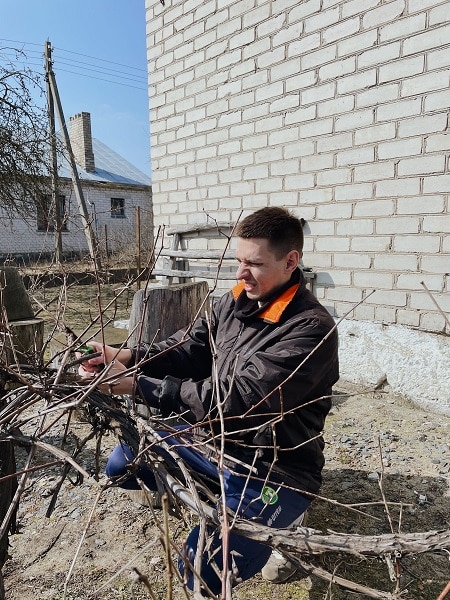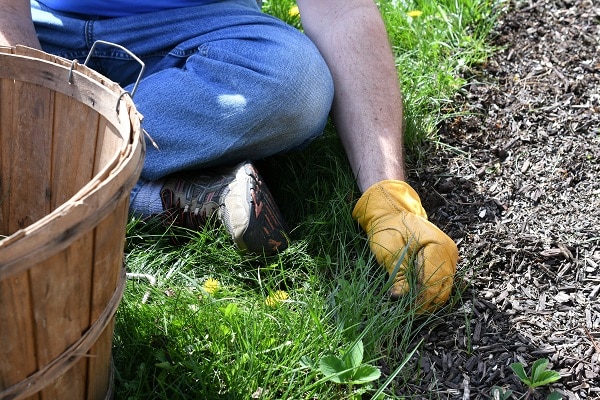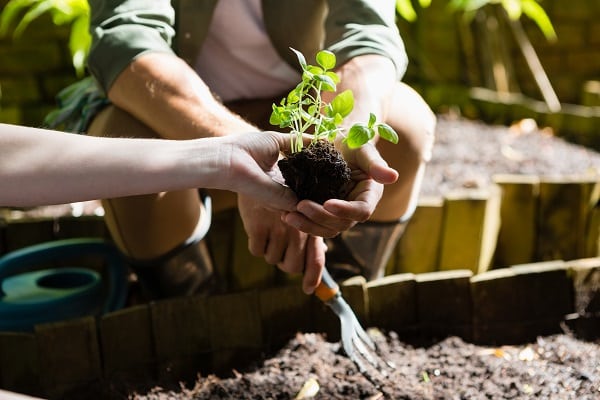Spring is coming! The days are getting longer, the sun is shining a little brighter, and plants are sprouting up all around us. If you’re someone with a green thumb or just wanting to try your hand at wanting to grow some of your own food, now is the time to start getting your garden ready for spring. So what’s involved in getting a garden ready for spring? There are several things you need to do when preparing for this gardening season. Let’s go through each one individually.
Contents
Check For Any Damage From The Winter

If you’ve been doing a lot of winter gardening, chances are that you’ll be checking the garden from top to bottom. Winter can do a number on a yard and it’s important to see if there was any damage done during the winter months.One thing to check for is dead or dying plants. If they seem okay, then you won’t be doing anything with them.
If there are several plants that look to have died or are dying, you’ll need to remove the plant, as well as any roots around it, so it doesn’t spread diseases to your other plants. Another thing to check for is rust on your tools. Rust can do some serious damage if not treated properly. Make sure to clean up all your tools before you pull them out for the next season so they don’t start rusting.
Rack Up Any Dead Leaves In The Garden

After checking the garden for any damage, it’s time to rack up all of your dead leaves. If you have a leaf rake in your garage or shed, this is a perfect time to use it. Take a walk around the garden and start racking up all that dead foliage in a pile. Once you have an ample amount of leaves in one area, you can go ahead and start racking up the leaves into a pile. Make sure that the leaf pile is far away from your other plants to avoid getting any diseases spread around.
Pull All The Weeds

Weeds are a pain, and a whole garden full of weeds is even more of a pain. So one of the first thing you want to do when getting your garden ready for spring is making sure there aren’t any weeds growing in it. This means going through each inch of dirt to make sure that none of those pesky plants have sprouted up overnight.
If you spot even one weed, pull it up immediately to be sure you get them all. Sometimes you might miss a few here and there that pop up after you’ve done your initial weeding, but this still means that there were some weeds growing in the first place. So stay diligent and make sure to pull every last weed so none take over your garden.
Double Digging Your Garden

Now that there are no pesky weeds growing in your garden, you want to make sure that everything else is well-prepared before you plant anything. Double digging the soil helps your plants get a good start because it adds both depth and aeration to your garden bed.
To do this, start by digging up the soil in your garden to a depth of about 4-6 inches. Then move the dirt to the side and dig another hole, but this time make it twice as wide. Move all that dirt from your first hole into your second, then break up any clumps you find in the bottom. Fill it back in with some of that dirt you moved, then use the dirt you’ve got left over to fill in any holes.
Lay Down Mulch

Once your soil is prepared it’s time for mulch. Mulch helps keep it from drying out or getting too much sun as the summer hits. Putting down a good layer of mulch also keeps weeds from popping up because they can’t grow under there. This means less weeding for you to do! There are several types of mulches you can use in your garden, such as straw or wood chips. Black plastic mulches can be left on top of the ground and poked with holes so you can plant your seeds right through them.
Prune Existing Plants

If your garden beds are all prepared, it’s time to do some pruning. Pruning plants that survived the winter helps keep them healthy so you can reap the full benefits. There are several types of pruning techniques, depending on the type of plant you have in your garden. For example, if you have a fruit tree but don’t do any pruning, you’ll be left with a whole bunch of branches that are hard to reach and over grown. Cutting up the tree into sections makes it easier to take care of each branch individually.
Another example is rose bushes. If you don’t prune them before spring starts, they’ll grow lots of stems coming out at all angles instead of one main one. This is because the plant doesn’t have enough nutrients to support all those branches, so it starts branching out instead. So if you have any plants that need pruning, now is a good time to do it before anything else comes up.
Pick The Plants You Want To Grow

Finally, it’s time to plan what you want to grow in your garden. Make a list of the vegetables and fruits that you enjoy eating or would like to try growing this year. You can either buy seeds or plants, depending on how much money you’re willing to spend and how much space you have available. Some things will do better if started from seed, while others will do better if you buy seedlings from a garden center. Make sure to consider what conditions your garden gets in when picking which plants you want to grow.
Conclusion
Many people think gardening begins once you plant the first seed. However, that is rarely the case. Preparing your garden for spring takes time, energy, and patience. Some steps may seem unimportant while others may be hard work. However, the tips listed in this article should provide a good foundation to get you started on getting your garden ready for spring. Once you’ve done all of these things all that should be left is the fun part. Growing a beautiful garden!